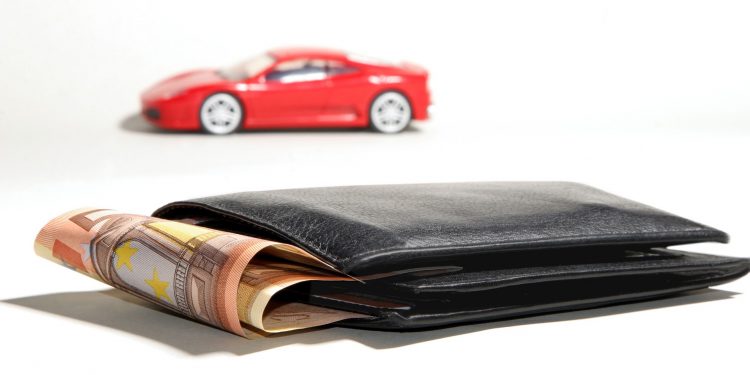Digital innovations abound in automotive retail—you can purchase a vehicle via your mobile phone without getting up from your couch. But surprisingly, automotive finance isn’t going through that same digital transformation.
Customers want seamless digital finance experiences when shopping for a vehicle, yet traditional and even new direct-to-consumer (D2C) manufacturers are slow to offer true innovation in digital finance. To better understand the current automotive finance environment, we need to understand the credit industry and applicable legislation.
Automotive Finance Is a Regulated Industry
The domain of auto finance is governed by legislation that provides guidance for safeguarding personal financial information, credit reporting, and equal credit opportunity. The three key acts of federal legislation are the Gramm Leach-Bliley Act, focused on data privacy and disclosure rules; the Fair Credit Reporting Act, which ensures accuracy, fairness, and privacy of credit reporting; and the Equal Credit Opportunity Act, introduced to promote equal access to credit and prohibit discrimination. In addition to this federal legislation, the Consumer Finance Protection Bureau (CFPB) was introduced in 2011 to help enforce federal consumer protection laws. While the automotive finance business is ripe for innovation today, we must keep in mind that since the industry is regulated, it must comply with federal legislation as well as state law, as the California Consumer Privacy Act (CCPA) states.
Customer Time and Convenience Are the Most Important Factors to Consider
In the years before e-commerce and the internet, the process of purchasing a vehicle was very slow and could easily require signing a stack of papers, which could take anywhere from several hours to an entire day. Even today, the time it takes to purchase a car can often be lengthy and this is still a key friction point. The main benefit of digitizing automotive finance in this highly regulated industry is to accelerate where possible, reducing the total amount of time required to complete a transaction and enabling as many digital solutions as possible, especially with paperwork. To enable this, there are certain customer-facing and behind-the-scenes aspects used by banks’ credit providers.
Banks can use next-generation capabilities for credit decisioning. For example, machine learning (ML) and artificial intelligence (AI) can help accelerate credit application processing and reduce the likelihood of errors. Additionally, risk management can also benefit from ML and AI tools as they can quickly flag suspicious credit applications and help reduce fraud. Powerful AI and ML back-end capabilities can power a much-improved customer front-end experience with quicker responses and the ability to move forward with a purchase as fast as possible.
For customers in the market to purchase a vehicle, the focus should be on educating customers about credit and simplifying the process of applying for credit—this includes leveraging a single digital experience on any device using digital documents. Customer time is often constrained and the ability to start a credit application on one channel and finish later on another is convenient and removes friction from the credit process. Since a customer has the option of financing through any bank, more options for integration to multiple financial providers can also help streamline the process. What’s more, providing digital solutions to enable a customer to obtain an estimate for a trade-in vehicle from the comfort of their home is a key accelerator in the car-buying process and helps the customer determine their budget and the total amount to finance a vehicle purchase.
Since the industry focuses on providing customers similar offers for a given credit score, down payment and vehicle for compliance, personalization can be challenging. However, personalization can drive deeper brand engagement and build strong customer relationships. Personalization tactics that comply with federal and state legislation can be powerful and may not necessarily be monetary, including membership in a loyalty club or loyalty points.
Where Do Cryptocurrency and Blockchain Fit In?
The market shifts in cryptocurrency that occurred in 2022 have, for the near term, impacted cryptocurrency value to such a degree that a crypto vehicle purchase may not be an option. That said, if a consumer wishes to purchase a vehicle with cryptocurrency, this can be done if the retailer accepts cryptocurrency as a form of payment.
Another crypto option for consumers would be to borrow against cryptocurrency assets in a similar fashion to how a consumer could borrow against a physical asset like a home from an online cryptocurrency bank. In the wake of recent developments in the crypto industry, this may be a possible but less viable option in the near term.
Still, the benefits of cryptocurrency can include the potential for increased transparency and reduced fraud. However, we are still in the early days of digital currency with virtually all original equipment manufacturers (OEMs) experimenting with cryptocurrency in some form or fashion until regulations are defined to govern digital currency more broadly.
Where Is the Industry Headed and Where Does Automotive Finance Go from Here?
All automotive manufacturers’ captive finance units need to provide fully digitized, multi-channel automotive finance tools. These tools must be inspiring and provide a compelling, branded experience on par with online retail market leaders and seamlessly integrate into the process of vehicle selection (stock purchase) or placing an order (build to order).
A focus on increasing automotive finance efficiency and accelerating and integrating the credit application and purchase processes for customers should continue to be the focus of automotive finance for the near future.
A simple, transparent, and engaging digital finance experience will drive customer satisfaction and reduce friction. And digital capabilities such as AI and ML will continue to expand in the back end to drive increasing speed, reductions in errors, and identify fraud earlier so it can be stopped. Yet automotive captive finance units and dealers will continue to cautiously experiment with cryptocurrency in order to be ready when crypto recovers in the future.










